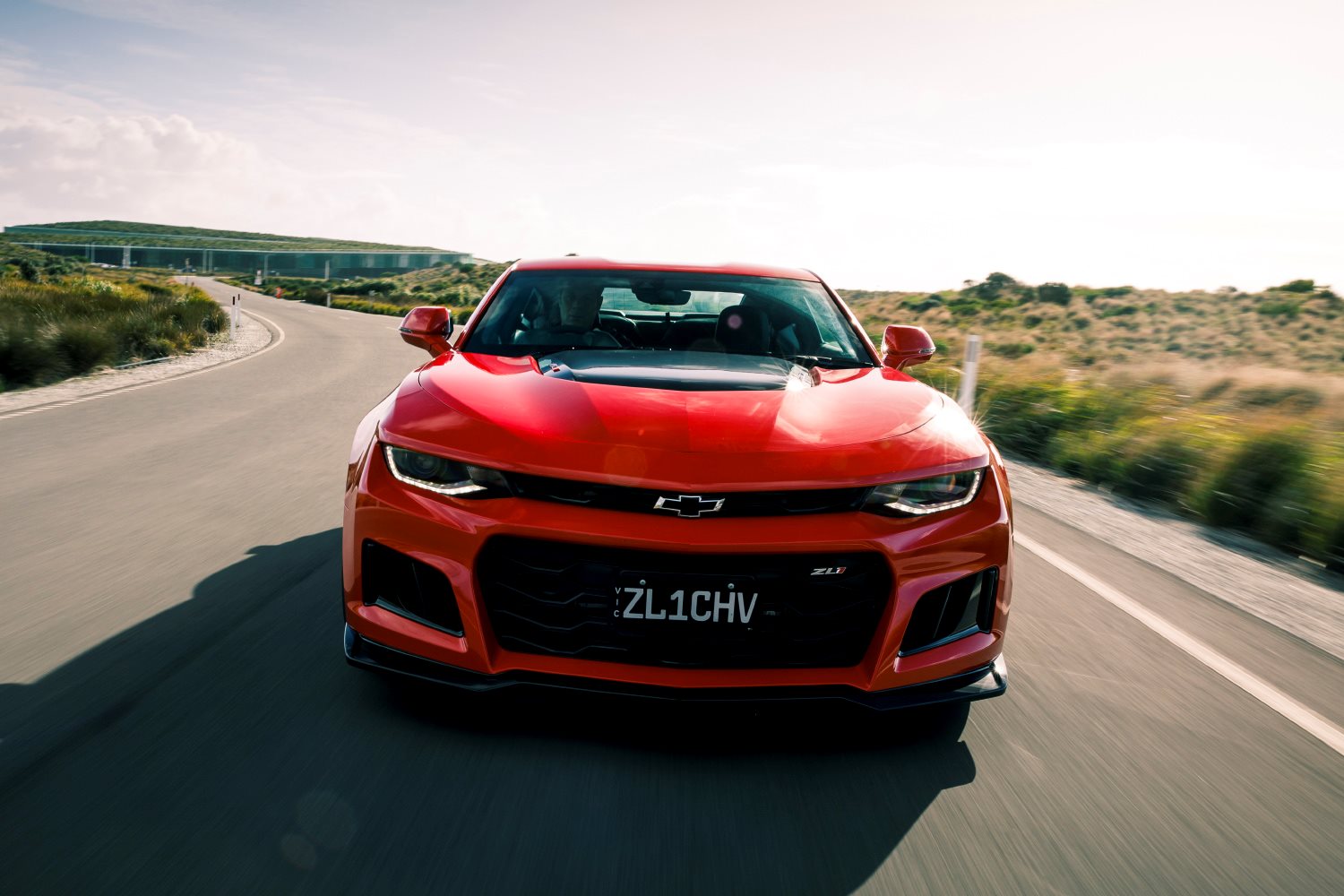Overall Rating

5 0 5
Plus & Minus
WHAT IS THE CHEVROLET CAMARO ZL1?
It’s been a feature of the US performance car market since 2012, but this is the first time we’ve had an official right-hand drive Camaro ZL1 sold in the Australian market. This 477kW/881Nm monster features a version of the Corvette Z06’s supercharged LT4 V8 and all that drive goes to the rear wheels. Available as a manual or an auto it’s not one for the shy or retiring.

WHY WE’RE TESTING IT
HSV had already proved it was capable of delivering on an almost seamless left- to right-hand drive re-engineering program with the normally aspirated MY18 Camaro 2SS. Now the Clayton plant turns its hand to the big brother. We have a few laps on track to get an early taste of the ZL1 before we secure one for a major Wheels magazine road test.
2019 CHEVROLET CAMARO ZL1 REVIEW
THERE’S DEFINITELY a moment in the Camaro ZL1 when you wonder if you’ve bitten off more than you can chew. For most people that moment is when they press the starter button. After all, this is a car that’s outside most normal frames of reference. Its 477kW is more than that of bona fide balls-out supercars like the Lamborghini Huracan Performante. Right at the moment, I’m looking at a wet and greasy Sandown race track and the tyres on the back of the ZL1.
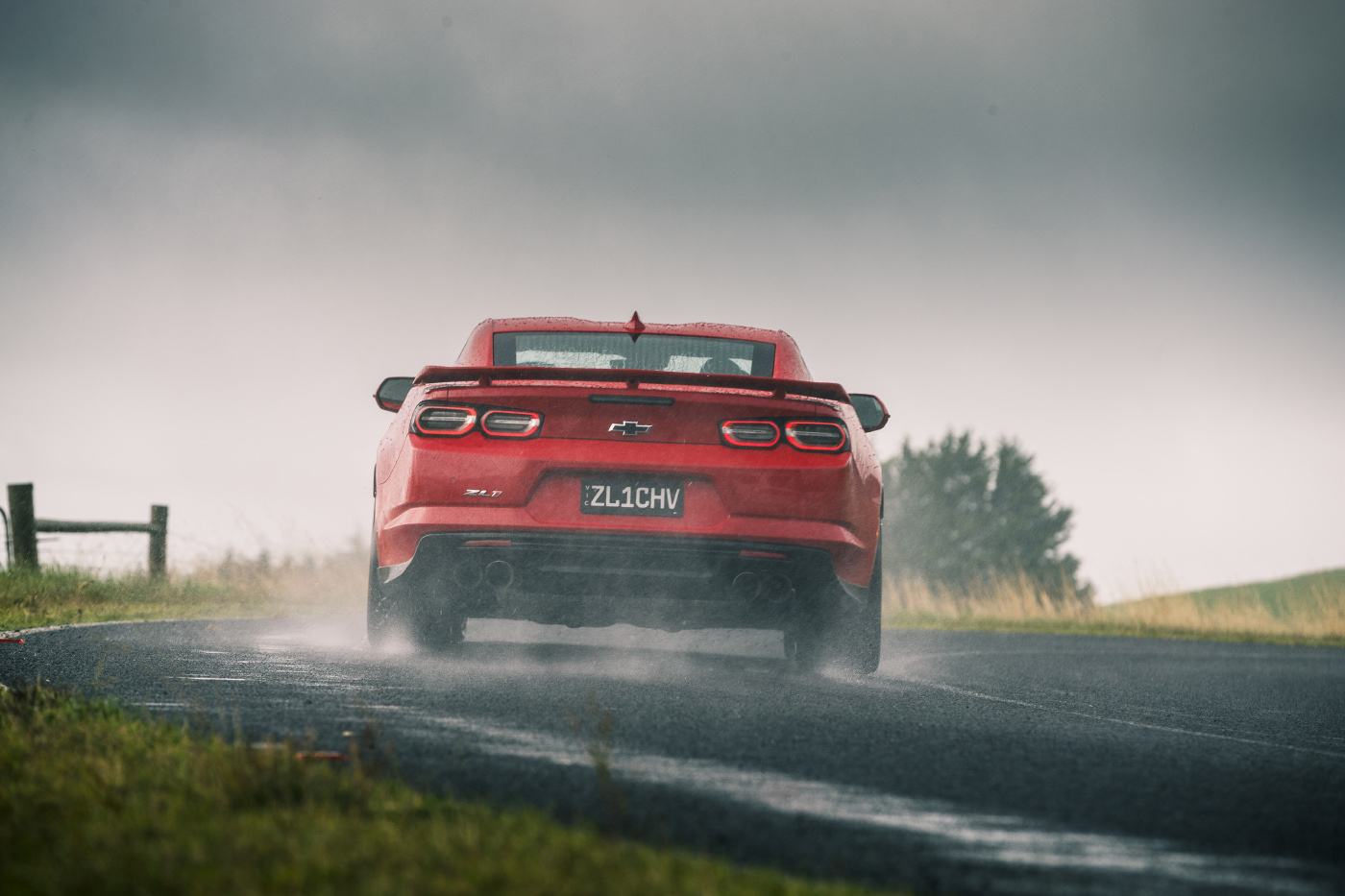
Let’s backtrack a little. As you’re probably aware, HSV does a lot of work converting the Camaro to right-hand-drive. The Clayton crew bring in US-spec MY19 ZL1s and basically strip everything out of them bar the front and rear glass, rear suspension assembly, fuel tank and differential. The car then undergoes a right-hand drive re-engineering process that’s quite remarkable. They’ll tell you about the hours that went into redesigning clutch pedals, refabricating bulkheads to GM best practice to allow for space in the pedal box, developing their own self-levelling system for the LED headlights and the hours and hours poured into getting the head-up display to work, a trick they couldn’t crack on the Camaro 2SS models we saw last year. It’s a huge and involved process and comes at considerable cost.
Central to that entire process is the fact that while HSV can re-engineer certain elements of the vehicle, it hasn’t waded in and started tuning suspension, reprogramming stability control systems or anything that – for the moment at least – might get the Chevrolet mothership in Detroit thinking that the Aussies had gone rogue.
So imagine the chin stroking that went on at Clayton when it became apparent that without ESC recalibration, the ZL1 wasn’t going to pass one Australian Design Rules requirement. That slightly obscure test, a so-called ‘split-mu’ exercise, or the ability of the car to brake in a straight line with the left hand set of tyres on a different friction surface to those on the right, was solved by swapping the ultra-sticky Goodyear Eagle F1s for the not so focused Continental Sport Contact 5s.
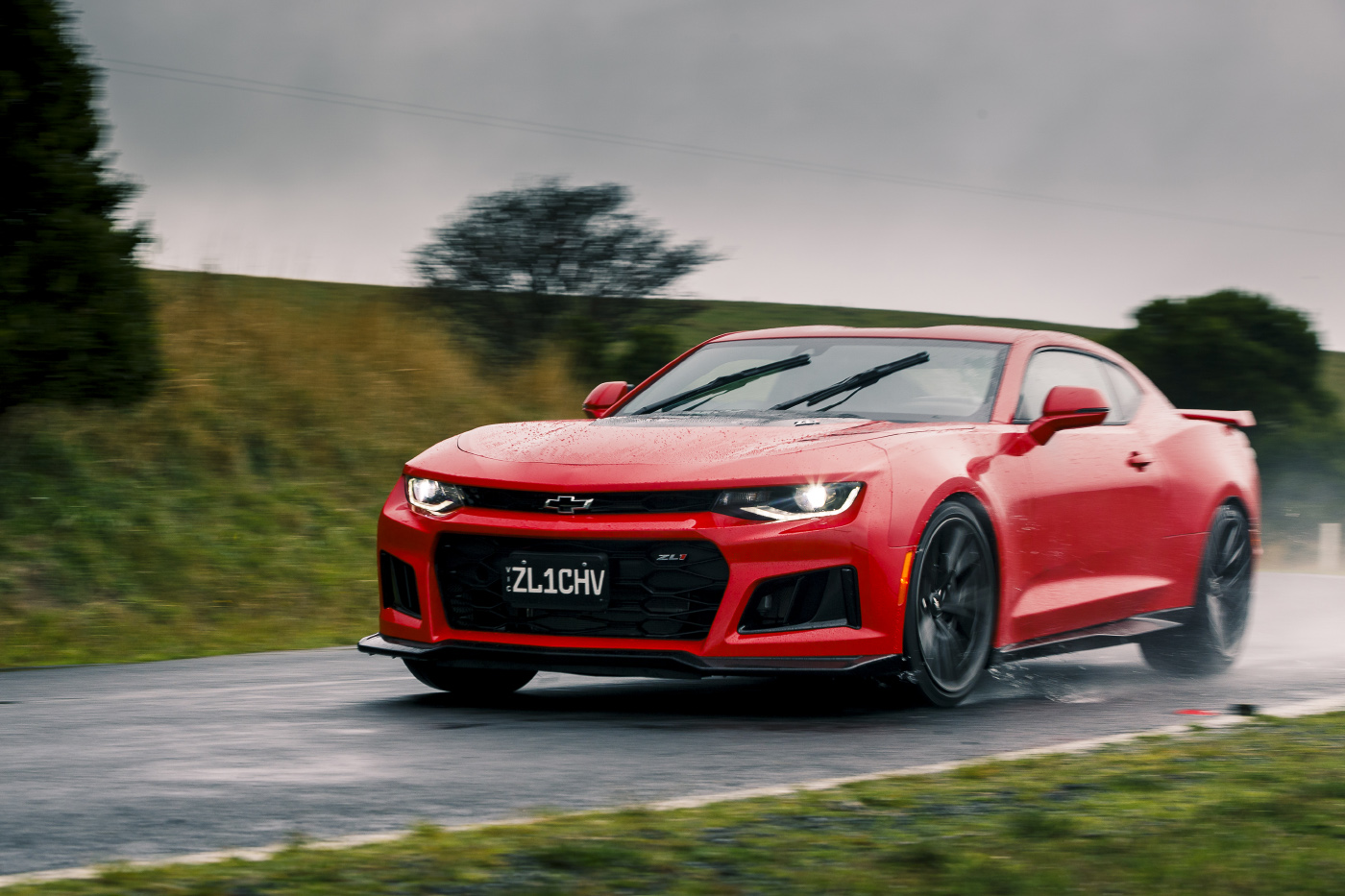
The patchwork quilt that is Sandown’s surface is generally held to afford the least grip of any major Australian circuit. We engage launch control and give the ZL1 the good news and, quite honestly, we’d have been smoked by something like a Focus RS endowed with about half the Chevrolet’s supercharged grunt. It’s hooking up about as successfully as me on a Hawaiian Tropic party bus.
Once it gets rolling, however, the acceleration is suitably ridiculous and accompanied by the keening overlay of supercharger whine. HSV have asked that, given the conditions, we limit our top speed to 180km/h today and the Camaro ZL1 rockets to that speed in less than a third of the front and back straights. Needless to say, we didn’t match the claimed 0-100km/h of 3.5 seconds.
Should you hanker after a little more traction off the line, HSV will sell you the original Goodyears, ostensibly as a ‘track tyre’ option pack for around $1000, which isn’t bad value given that they’d normally set you back around $2500. Our advice would be to avail yourself of HSV’s benevolent offer and retain the Contis for other duties.

The engine – and that 881Nm of treadblock torture – might dominate the ZL1’s character but there’s real subtlety and talent beyond the headline numbers. We only had the opportunity to drive the car on track (look out for a forthcoming road drive) but there’s real sophistication to the suspension tune. HSV’s engineers freely admitted that the budget poured into the development of the ZL1’s ride and handling have given them very little scope for improvement. Anything that can notch a sub-7m30s lap of the Nurburgring is properly sorted.
Although we’re painfully aware that it’d be easy to skate the front end into Sandown’s slower corners, the steering feels a little meatier than the Camaro 2SS’ helm, helped by the fact that there’s a much wider tyre up front, 283/30ZR20 versus the normally-aspirated car’s 245/40ZR20 hoops. The Magnetic Ride dampers do a great job of ironing out the small bumps into many of the track’s big braking zones and there’s ample opportunity to cycle through the drive modes and assess the effect on the rear end. With a measured right boot, it’s tidy, with the e-diff doing a good job of massaging the car onto line, but HSV clearly doesn’t feel it’s so benign that they’ll either let us string together flying laps or let us out without a minder alongside who squirms when you start getting on the gas early.
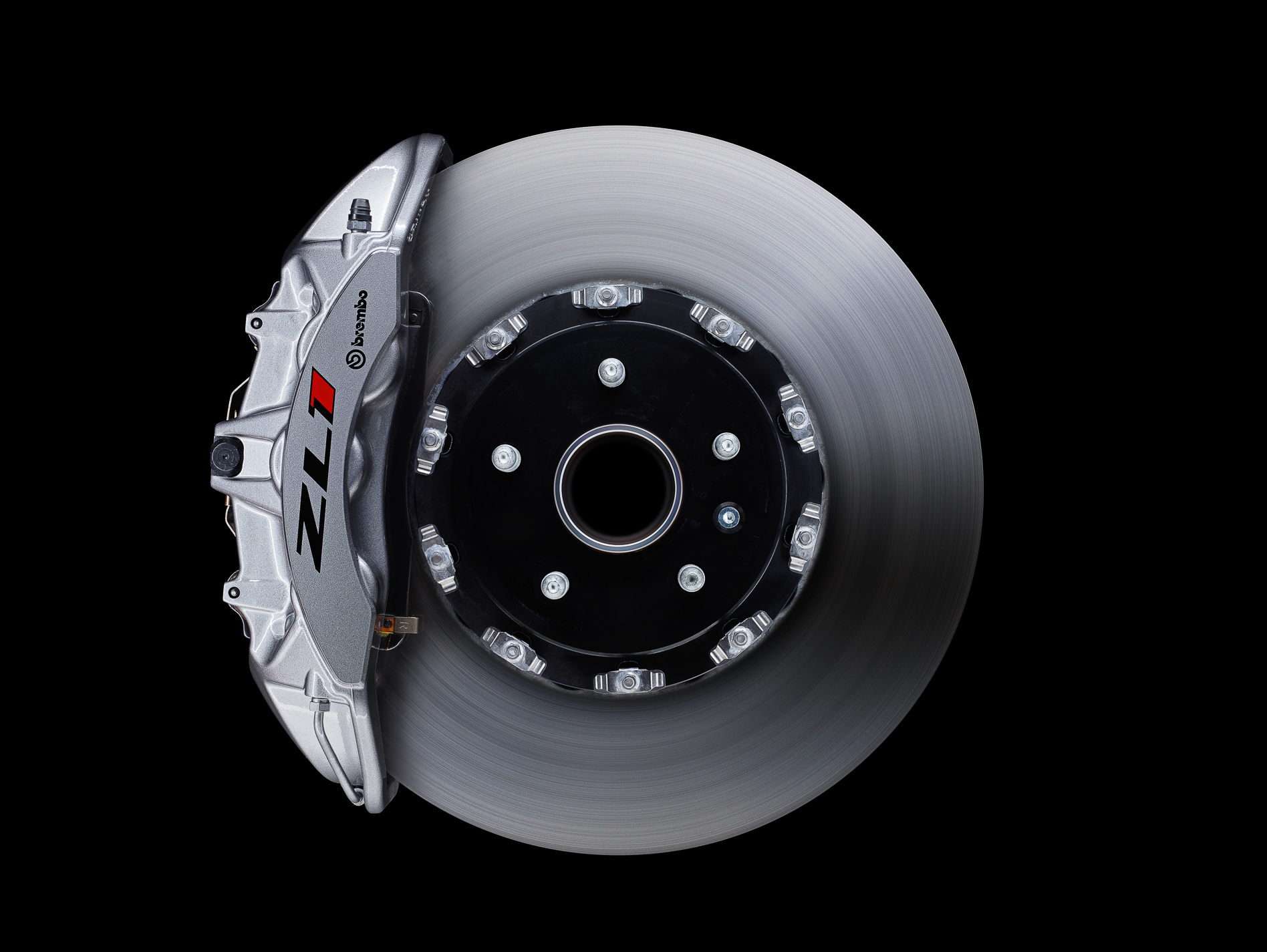
The Brembo brakes deserve special mention. The 390mm two-piece front discs are manhandled by six-pot Monobloc calipers and at full pressure, they’re fierce but with decent pedal feel making them easy to modulate. What’s more, the ZL1’s body control is so good there’s very little front-end dive when you really mash the picks.
Both the ten-speed auto and the six-speed manual were along for us to sample, the latter with a beautifully calibrated rev-matching function and a stubby suede-wrapped lever with a weighty, positive action. While the auto is undoubtedly quicker and makes more sense in the real world, there’s something about the manual car that just feels so purposeful and correct. The manual car does without the auto’s remote start function but I reckon I wouldn’t lose any sleep over that. The line lock function that allows you to smoke the rears in the auto might well be a more convincing fitment.
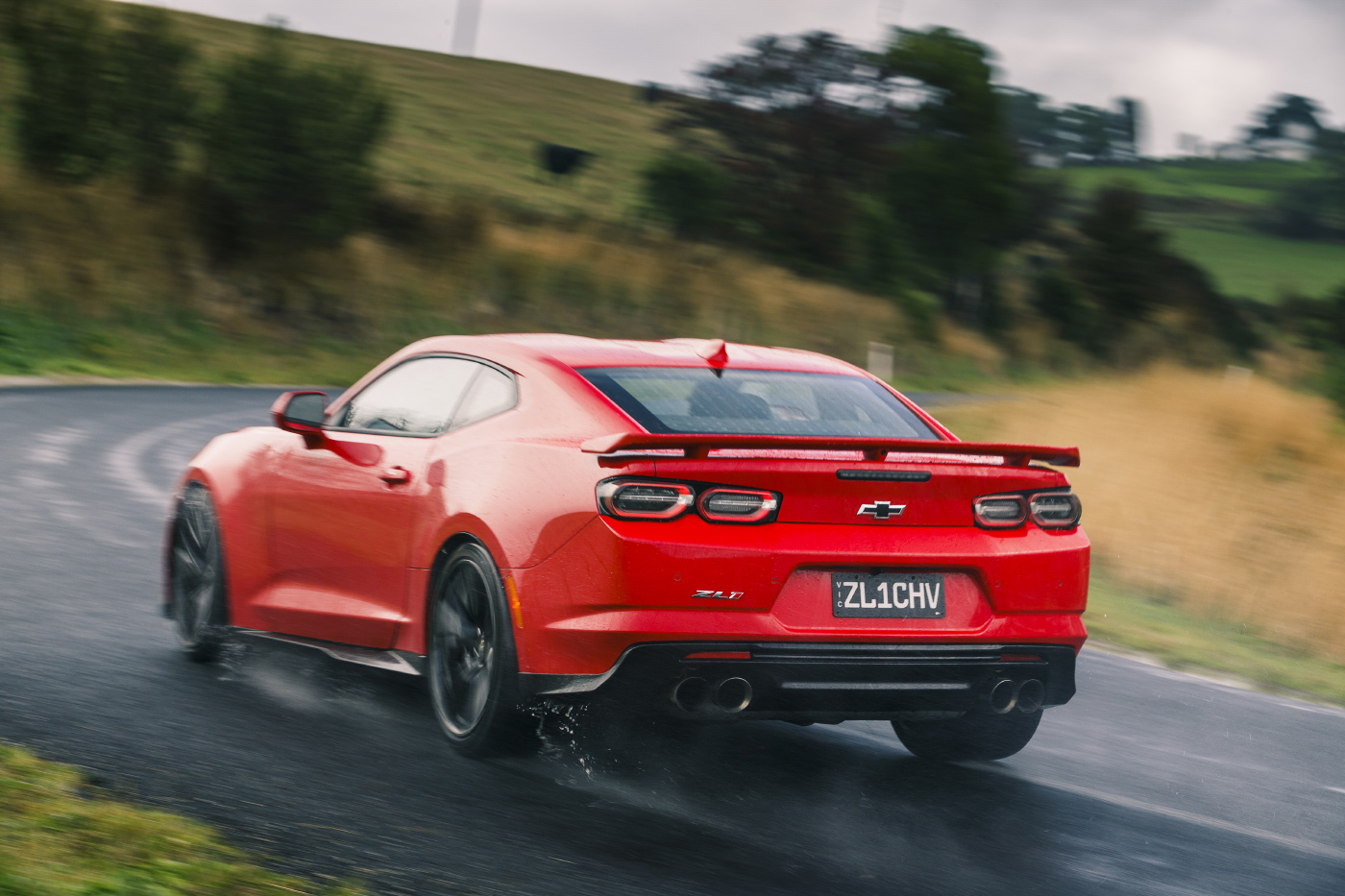
Pricing? The manual car retails at $159,990 and the auto adds another $2200 to that figure. Now clearly this is going to appear very expensive in the context of a certain coupe from the Blue Oval bunch, but given the re-engineering that’s gone into the right-hook ZL1, we’re clearly not comparing apples with apples. Instead look at that headline power figure and ask what else you can buy for the money that comes close. The 522kW Jeep Grand Cherokee Trackhawk is the obvious outlier, but the Camaro ZL1 trounces things like the $163k Mercedes-AMG C63 S Coupe (375Kw/700Nm). Even if you stepped up to the $229k BMW M5 Competition, you’re still short-served by a few kilowatts and Newton metres.
First impressions are positive then. Obviously we can’t deliver a definitive verdict on an accompanied drive on a track with a grip coefficient that, for today at least, is about as slippery as a politician’s promise, but that which we can assess suggests that HSV won’t have too much difficulty shifting units. This is a serious and seriously exciting V8 sports coupe. The day that Australia stops finding that formula attractive is still, thankfully, a very long way away.
CHEVROLET CAMARO ZL1 VS RIVALS
Mercedes-AMG C63 S Coupe
The AMG feels angry and balled-up much like the Camaro, and while it might offer a polished sheen of quality that the Chevrolet can’t match, when it comes to actual engineering substance, there’s not a lot to choose between the pair of them. Perhaps the Mercedes just ekes an edge when it comes to purity of soundtrack though.
CHEVROLET CAMARO ZL1 PRICE AND SPECS AUSTRALIA
Model: Chevrolet Camaro ZL1
Engine: 6162cc, supercharged V8, ohv, 16v
Max power: 477kW @ 6400rpm
Max torque: 881Nm @ 3600rpm
Transmission: 6-speed manual (10-speed auto optional)
Weight: 1795kg
0-100km/h: 4.9 sec (as tested)
Fuel economy: 15.6L/100km (claimed)
Price: from $159,990
On sale: Now


